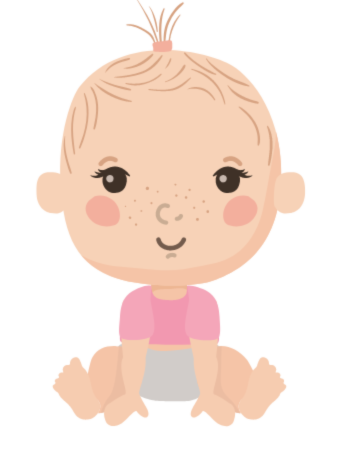Create a Safe Sleep Environment
The first and most important thing you need to do when preparing your home for a new baby is to create a safe sleep environment. Here are some tips:
Choose a safe crib: Make sure your baby’s crib meets current safety standards and has no loose or missing parts.
Use a firm mattress: A firm mattress is best for your baby’s safety and helps reduce the risk of Sudden Infant Death Syndrome (SIDS).
Avoid soft bedding: Avoid using soft bedding like blankets, pillows, and stuffed animals in the crib. These can pose a suffocation risk to your baby.
Keep the crib clear: Keep the crib clear of toys, pillows, and blankets to prevent suffocation and other hazards.
Baby-Proof Your Home
Once your baby starts crawling and exploring, you’ll need to baby-proof your home to keep them safe. Here are some tips:
Install safety gates: Install safety gates at the top and bottom of stairs, and in doorways to rooms with hazards.
Cover outlets: Cover all electrical outlets with outlet covers to prevent your baby from sticking their fingers or objects into them.
Secure furniture: Secure furniture like bookshelves and dressers to the wall to prevent them from tipping over onto your baby.
Lock cabinets: Lock cabinets and drawers containing hazardous items like cleaning supplies, medications, and sharp objects.
Set Up a Diaper Changing Station
You’ll be changing a lot of diapers in the first few months, so setting up a diaper changing station is essential. Here are some tips:
Choose a convenient location: Choose a location that’s easily accessible and has plenty of space for a changing pad, diapers, wipes, and other supplies.
Use a changing pad: Use a changing pad to keep your baby comfortable and secure during diaper changes.
Stock up on supplies: Stock up on diapers, wipes, diaper cream, and other supplies so you don’t have to make a trip to the store in the middle of the night.
Keep it organized: Use a diaper caddy or organizer to keep everything you need within reach and organized.
Create a Baby-Friendly Living Space
You’ll spend a lot of time in your living space with your baby, so it’s important to make it safe and comfortable. Here are some tips:
Choose soft furnishings: Choose soft furnishings like plush rugs and comfortable seating to create a cozy and comfortable environment.
Remove hazards: Remove hazards like sharp objects and breakable items that your baby could reach.
Create a designated play area: Create a designated play area with soft flooring and age-appropriate toys.
Install window treatments: Install window treatments like blinds or curtains with cordless or inaccessible cords to prevent strangulation hazards.
Prepare for Feeding
Feeding your baby is one of the most important tasks you’ll do as a parent, and it’s essential to have a comfortable and convenient setup. Depending on whether you choose to breastfeed or bottle-feed, there are a few things to consider when preparing for feeding.
Breastfeeding:
Choose a comfortable nursing chair: You’ll be spending a lot of time in your nursing chair, so it’s important to choose a comfortable and supportive chair with good back support.
Get a breastfeeding pillow: A breastfeeding pillow can help support your baby and make breastfeeding more comfortable for both of you.
Stock up on breastfeeding supplies: Stock up on breastfeeding supplies like breast pads, nipple cream, and a breast pump if you plan to pump milk.
Find a private space: You may want to find a private space to breastfeed in if you’re uncomfortable doing it in public. You can set up a nursing station in your bedroom or create a private corner in your living space with a nursing cover.
Bottle-Feeding:
Choose a bottle-feeding area: Choose a comfortable area to bottle-feed your baby. You can set up a feeding station in your living space or nursery with a comfortable chair, table, and bottle warmer.
Stock up on bottle-feeding supplies: Stock up on bottle-feeding supplies like bottles, nipples, formula, and a bottle brush.
Prepare the formula: If you’re formula-feeding, it’s important to prepare the formula according to the manufacturer’s instructions and use sterile bottles and nipples.
Consider a feeding schedule: Consider establishing a feeding schedule that works for you and your baby, whether it’s on-demand feeding or a more structured schedule.

